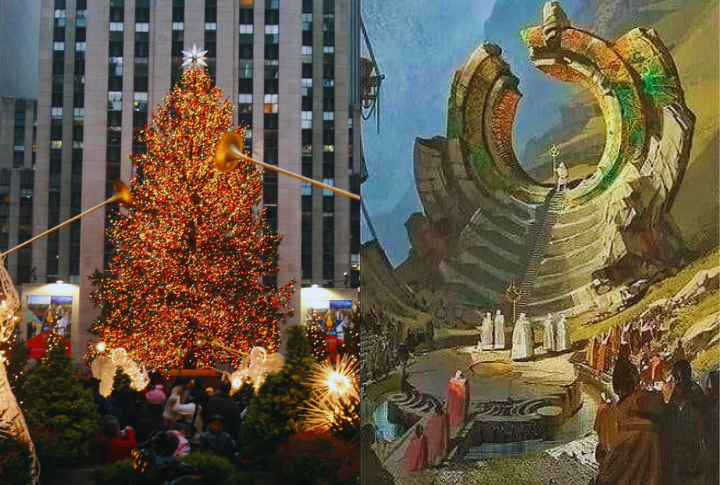
Many of the traditions we celebrate today seem purely modern, but they actually hide ancient secrets beneath the surface. So, let’s take a closer look at some of these present-day traditions in order to reveal the fascinating connections they all have with their pagan roots. It’s certain you’ll find them interesting.
Lighting Birthday Candles
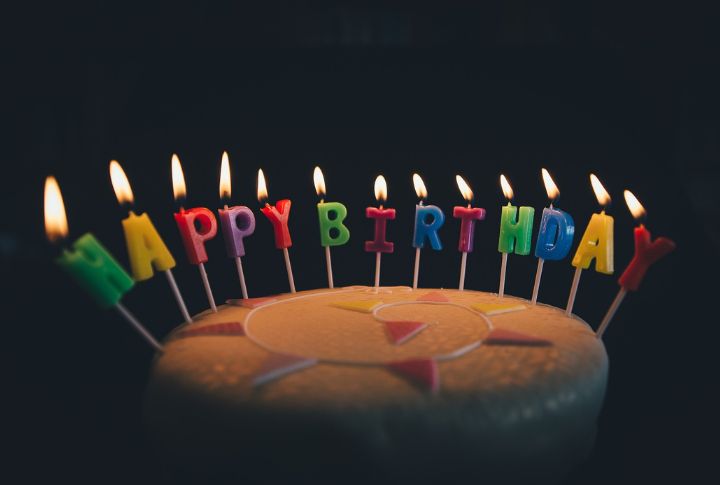
People are fond of lighting candles on their birthday cakes—a pagan tradition that comes from ancient Greek offerings to Artemis, the goddess of the moon. The lit candles around birthday cakes are used to mimic the moon’s glowing lights, in order to honor the birth of the goddess every lunar month. Also, the act of blowing out the candles symbolizes sending prayers and wishes to heaven for divine protection.
Decorating Christmas Trees
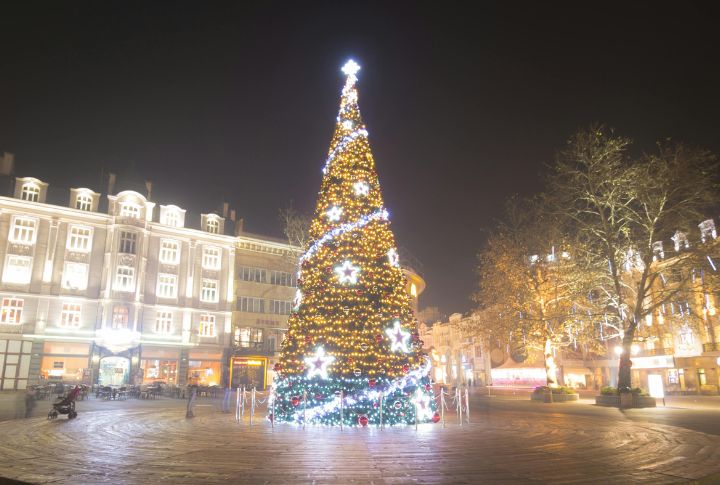
The tradition of decorating evergreen trees during Christmas dates back to ancient pagan rituals to celebrate the winter solstice. In the 16th century, Germans began bringing trees into their homes and decorating them, a practice that spread throughout Europe and eventually to the Americas. During the winter solstice, these evergreen trees were believed to ward off evil spirits and bad luck.
Wearing Wedding Rings

The exchange of rings in marriage ceremonies can be traced back to ancient pagan rituals where rings were symbols of eternity and the unbroken circle of life. Wearing the wedding ring on the fourth finger of the left hand comes from the ancient Greek and Roman beliefs that this finger contained the “vein of love”—which was said to be directly connected to the heart. Hence, signifying eternal commitment to love.
Celebrating Harvest Festivals
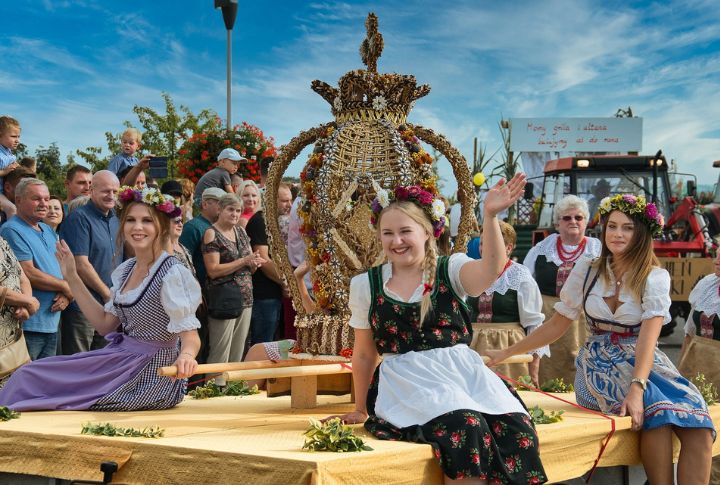
Celebrating Valentine’s Day

Celebrated annually on February 14—Valentine’s Day is a beloved tradition for lovers worldwide who exchange gifts to mark their union. Its origins trace back to the Roman festival of Lupercalia, a fertility celebration dedicated to the god Faunus. Over time, it evolved from a Christian feast day honoring Saint Valentine into a major cultural, religious, and commercial celebration of romance.
Performing Funeral Rites
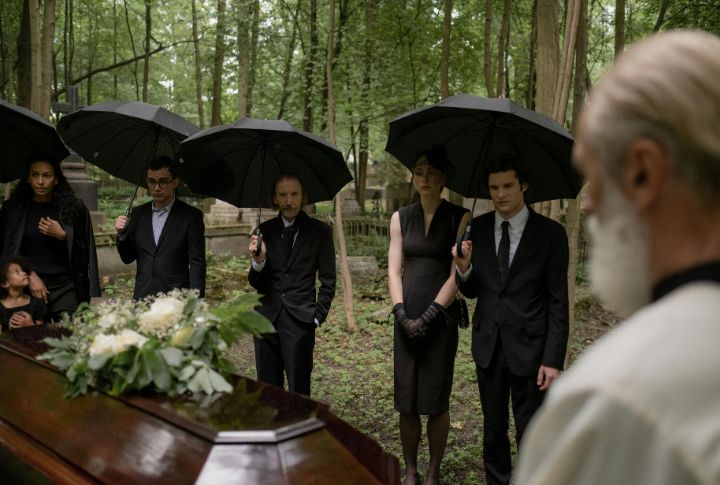
Funeral rites are as old as human culture itself—a custom dated to at least 300,000 years ago. You’ll find that many funeral customs such as mourning periods, memorial services, and the concept of an afterlife, have deep-rooted connections to pagan beliefs and rituals. Performing these funeral rites symbolizes honoring the deceased, ensuring their peaceful transition to the afterlife, and offering closure and comfort to the living.
Acknowledging Groundhog Day

A celebration that has its roots in the pagan festival of Imbolc is Groundhog Day. On this special day—February 2nd—people watch a groundhog to see if it comes out of its hole and sees its shadow. If the groundhog sees its shadow and goes back into its hole, it means there will be six more weeks of winter. But if it doesn’t see its shadow and stays outside, that means spring will come soon.
Halloween Day Celebration

This modern tradition—celebrated on October 31st—has roots in the Celtic festival of Samhain, a time when it was believed that the veil between the living and the dead was thinnest. Many Halloween traditions, like wearing costumes, lighting bonfires, and carving pumpkins, are modern adaptations of old pagan practices meant to ward off spirits.
Decorating Easter Eggs

The tradition of decorating Easter eggs dates back to ancient Persia, where eggs were painted for Nowruz, the Persian New Year, which also celebrates the arrival of spring. The egg is a symbol of fertility and rebirth in many pagan cultures, especially in spring festivals. It is the oldest tradition in Eastern Europe.
Naming Ceremonies

Naming children at childbirth is a modern-day practice but one with ancient pagan roots. The idea of naming a child originates from various ancient cultures in Africa, Asia, and the United States. This tradition believes that a child’s name carries significant spiritual meanings, so it has to be celebrated.
Santa Claus Mimicking

Santa Claus has origins in various pagan traditions, including the Norse god Odin, who was said to ride across the sky on a horse during the Yule season, delivering gifts to his followers. The modern image of Santa Claus was heavily influenced by 19th-century depictions of Saint Nicholas, but also by earlier depictions of the Dutch figure Sinterklaas, who was himself a blend of Christian and pagan traditions.
Lighting Bonfires

Bonfires were an essential part of many pagan festivals, particularly those celebrating the solstices and equinoxes, as they symbolized the sun’s power. The tradition of lighting bonfires on Halloween and Guy Fawkes Night in the UK is a continuation of these ancient customs. The fire represents purification, protection, and the renewal of life.
Mardi Gras Celebrations

Mardi Gras has roots in the ancient Roman festival of Saturnalia, a time of feasting, dancing, and general partying before the strict period of Lent. The colorful beads and masks of modern Mardi Gras celebrations are believed to be connected to pagan rituals that involved wearing disguises to avoid evil spirits.
Maypole Dancing
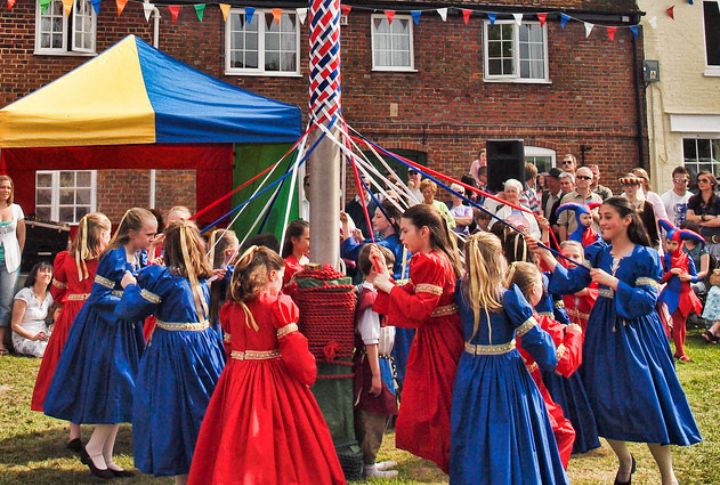
This tradition comes from ancient Germanic and Celtic fertility rites. The Maypole itself is often considered a phallic symbol because it represents fertility. The ribbons and dances associated with the Maypole were believed to weave together the forces of nature, ensuring a prosperous harvest. It is celebrated on May 1st every year.
New Year’s Resolutions

Polina Kovaleva/Pexels
The practice of making resolutions dates back to the ancient Babylonians, who made promises to their gods at the start of each year to return borrowed items and pay debts. The Romans also made similar resolutions during the festival of Janus, the god of beginnings, after whom January was named.

Comments
Loading…